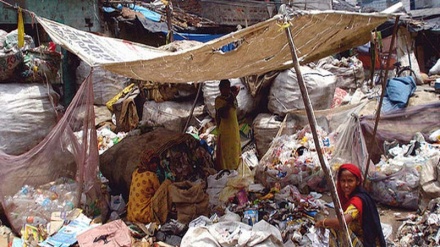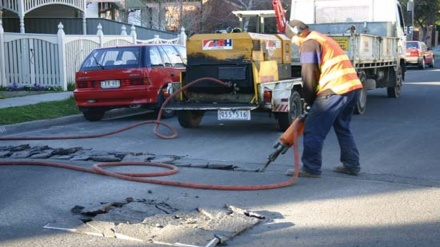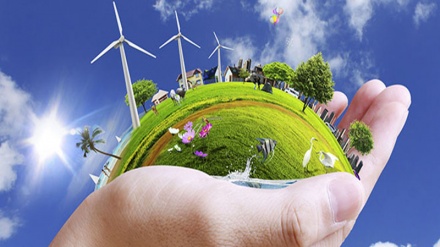We only have one planet to live on (14)
Welcome to the 14th weekly episode of the series We Only Have One Planet to Live On. Today, we speak of the importance of soil in protection of the environment.
After water and air, soil is the most important element in formation of the universe, and is an integral part of the environment. Soil also forms the basis for a number of creatures, especially human communities, and has led to formation of a unique living environment, especially for plants. Soil provides food for mankind and the majority of living creatures, and therefore is considered as the foundation of production, food security, and self-sufficiency of countries. This is because in case of destruction of soil, and/or its elimination; the human communities, countries, and even our planet would not be able to survive. More importantly, soil in fact bonds sustainable development with the health of mankind and the ecosystem.
According to Food and Agriculture Organization (FAO) Director-General, Jose Graziano da Silva, a healthy soil forms the basis for food, fuel, fiber, and pharmaceutical products, and is considered essential for the human ecosystem, playing a key role in the carbon cycle, storage and filtration of water, and enhancement of flexibility toward floods and drought. Soil is also known as an appropriate purifier in the nature. This feature of soil is rooted in physical features such as infiltration of water through pores; and chemical aspects of soil such as surface absorption, and evaporation of water, and the biological features of soil such as disintegration of organic materials.
The main components of soil are minerals, organic materials, water, and air. These integral parts are naturally interconnected, such that their separation is a difficult task. The appropriate combination of the integral parts of soil for growth of plants must be such that 45% of soil should be shaped by minerals, and 5% should be organic materials, while the other 50% should consist of pores which are filled with water or air. Meanwhile, the ratio of water and soil is variable; and under the influence of soil and atmospheric conditions. In normal conditions, each of the soil particles is in direct contact with a large number of living creatures. Although these creatures comprise a minute volume in soil, each group of these living creatures are considered to be a part of soil, like the cells of a living body. In average, for production of each centimeter of a fertile soil, duration of 300 to 1,000 years is needed, and if we assume that the agricultural soil is 25 centimeters in depth; this thickness of soil has been created in a period of roughly 20,000 years. However, the pace of destruction of soil is faster than the pace of its production.
So, man’s life is dependent on soil; and the appropriate management of soil leads to self-sufficiency of countries. History has shown that destruction of soil upon restriction of the volume of water and soil, in addition to floods, and drought, have been factors that have led to the downward spiral and decline of civilizations. Throughout the course of history, major civilizations have emerged in locations which maintained appropriate sand. Meanwhile, the collapse of major civilizations, such as the civilizations of Mesopotamia, and River Nile Valley has taken place due to destruction of soil in those regions.
However, this God-given blessing has not been attended as such due to its vast presence on Earth, and the intangibility of its functions, while the rate of destruction and erosion of soil has been relatively high. Soil erosion is an unwanted phenomenon which takes place due to a number of natural and human factors, leading to the movement of soil and its sedimentation in another location. Parameters such as urban development, accumulation of urban and industrial wastes, penetration of some chemicals in soil, excavation of mines, irregular livestock grazing, usage of poisons and pesticides, in addition to excessive consumption of chemical fertilizers lead to erosion and contamination of soil and destruction of the ground.
In the past fifty years; the erosion of soil in some Asian countries has amounted to loss of up to 7% of agricultural products. Based on estimations, millions of hectares of farmlands are destroyed due to soil erosion across the world, every year. The destruction of soil and eradication of flora, coupled with the emission of carbon dioxide into the atmosphere has gradually led to global warming and emergence of destructive atmospheric phenomena, thereby causing a major challenge for mankind. Based on FAO estimations, roughly one third of world’s soil is getting destroyed due to a number of reasons such as erosion, density, minerals, reduction of organic materials in soil, acidification, contamination, and other processes resulting from the unsustainable management of soil. FAO director general has confirmed this fact, while also pointing out that today, more than 805 million people round the world are exposed to hunger and malnutrition. Meanwhile, given the existing growth of global population, a 60% growth in food production is necessary. The production of this food is also tied to the soil conditions.
A glance at soil erosion across the globe shows that soil may be destroyed prior to termination of oil sources. Currently, the tall North American Mountain Ranges have turned into a vast desert. Its farmlands and meadows have been covered with dead soil, and the related residents have been forced to leave that region in the aftermath of eight years of mounting thunderstorms. Also, throughout the recent years, we have been witness to several storms in China, which has partly destroyed that country’s fertile lands.
Moreover, one third of Haiti’s fertile land has been eroded, dealing a heavy blow to that country’s agricultural sector. Furthermore, vast regions of Africa have been mired in poverty due to soil erosion. Inappropriate irrigation methods in Australia, Middle East, and India have led to saturation of farmlands with salt. In other parts of Asia; such as Kazakhstan, Uzbekistan, and North China, the rate of desertification stands at 3600 square kilometers per year. Southeast Asia, which is largely covered with rainforests, is also exposed to soil erosion. In fact, based on estimations, 75% of this region’s rainforests may be destructed until the year 2100 AD.
In order to attach further importance of soil, December 5 has been named as the international day of soil, with the intention of encouraging governments, global policymakers, and private sector activists to dispel shortcomings, and to improve soil quality. Upon the approval of this day; conferences and meetings are held every year in a number of countries on December 5, which disseminate information to people on the importance of soil. Meanwhile, the United Nations assigned the year 2015 as the Year of Soil, in an effort to attach further importance to this God-given source.
FAO, coupled with UNESCO, have carried out 120 soil-related projects across the world.
MR/SS


